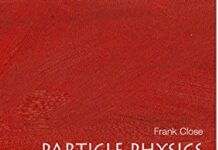
Ebook Info
- Published: 2015
- Number of pages: 400 pages
- Format: PDF
- File Size: 1.86 MB
- Authors: Frank Close
Description
It was at the height of the Cold War, in the summer of 1950, when Bruno Pontecorvo mysteriously vanished behind the Iron Curtain. Who was he, and what caused him to disappear? Was he simply a physicist, or also a spy and communist radical? A protege of Enrico Fermi, Pontecorvo was one of the most promising nuclear physicists in the world. He spent years hunting for the Higgs boson of his day — the neutrino — a nearly massless particle thought to be essential to the process of particle decay. His work on the Manhattan Project helped to usher in the nuclear age, and confirmed his reputation as a brilliant physicist. Why, then, would he disappear as he stood on the cusp of true greatness, perhaps even the Nobel Prize? In Half-Life, physicist and historian Frank Close offers a heretofore untold history of Pontecorvo’s life, based on unprecedented access to Pontecorvo’s friends and family and the Russian scientists with whom he would later work. Close takes a microscope to Pontecorvo’s life, combining a thorough biography of one of the most important scientists of the twentieth century with the drama of Cold War espionage. With all the elements of a Cold War thriller — classified atomic research, an infamous double agent, a possible kidnapping by Soviet operatives — Half-Life is a history of nuclear physics at perhaps its most powerful: when it created the bomb. Physics at perhaps its most powerful: when it created the bomb.
User’s Reviews
Editorial Reviews: Review Aberdeen Press and Journal (UK)“At times [Half-Life] feels more like a cold war spy novel as Pontecorvo’s life takes some extraordinary twists and turns, which will keep readers new and old glued until the end.”Times Higher Education Supplement (UK)“[Half-Life] is a tale whose le Carré-esque cast of spies, double agents, couriers, intercepted messages and clandestine escapes cries out for dramatisation. Close tells it well, but eschews any novelistic invention of scenes whose details he cannot know.”The Scotsman (Scotland)“[Close] shows flair for writing a biography that is both rivetingly fascinating for those of us who are interested in the history of science and highly readable for those who have a taste for mystery thrillers…. [An] excellent biography.”John Gribbin, author of In Search of Schrödinger’s Cat“Frank Close’s books get better and better. Half-Life is an enthralling insight into the life and times of one of the most mysterious characters of twentieth century science. Weaving together a fascinating personal life and the politics of the Cold War with his usual insightful exposition of physics, Close has produced a triumph of scientific biography. For once, truth really is stranger than fiction.”Library Journal“Close does an excellent job of describing the personal and professional lives of his subject, as well as the international intelligence community’s investigations of Pontecorvo before and after he defected to the Soviet Union. This fascinating and well-researched account will appeal to a wide range of readers, including those interested in World War II and the foundation of the Manhattan Project, the Cold War, particle physics, the process of scientific investigation, and the life of scientists.”Publishers Weekly“[A]n intensively researched, engrossing biography that turns up some suspicious behavior and mildly incriminating documents…. Close serves Pontecorvo well in this outstanding biography, illuminating his work as well as the painful political conflicts of his time.”Kirkus Reviews“[An] insightful biography…. Close’s intense research turns up hints that [Pontecorvo] spied and, warned by other spies, fled to avoid arrest. A fine account, heavy on science and politics, of a long, productive, peripatetic and ultimately inexplicable life.”Graham Farmelo, The Guardian (UK)“Frank Close brings a fresh perspective to the story…. [I]mpressively researched.”Nature“Too many books are fêted as reading ‘like spy novels’, but Close’s work deserves the accolade. He makes a good circumstantial case for Pontecorvo being a spy.”Open Letters Monthly“[U]tterly absorbing…. Close brings a great deal of new and groundbreaking research to the question of whether or not Pontecorvo had been an active spy even before he and his family defected…. Half-Life is a remarkably thorough analysis…a grim and depressing double-history of one of the worst and most fascinating traitors of the atomic arms race that defined a generation. The fact that the book’s readers will close its final page knowing much, much more about nuclear physics than they did when they started it is a very pleasing by-product, to use a loaded term.”Washington Post“[Half-Life] ranges over physics, the arms race, Cold War politics and, most poignantly, the personal costs of the elder Pontecorvo’s choice.”Peter Woit, Not Even Wrong“[A] gripping spy story, investigating the question of exactly why Pontecorvo fled with his family to the Soviet Union in 1950…. Besides the fascinating spy story, there’s also a lot of history of nuclear physics during the 30s, 40s and 50s…as well as quite a bit about Pontecorvo’s later work on neutrinos. If you’re interested in the history of 20th century physics, this is something you’ll find well worth reading.”Freeman Dyson, New York Review of Books“Close tells the story of Pontecorvo’s life in sharp detail, with all the facts and conjectures carefully documented.”Wall Street Journal“It is a remarkable story–part physics and part Cold War intrigue–and it is wonderfully told in Half-Life, a biography by the Oxford physicist Frank Close…. There is much about this tale that has the flavor of a le Carré novel, with the additional advantage that it is all true.”Pittsburgh Tribune-Review“[D]elves into a man and a mystery that deserve to be better known.”The Economist“[A]n engrossing new book…. But [Pontecorvo’s] alleged deceit is only half of the story. Mr. Close, a physicist himself, also explains the science that made him so valuable.”PRAISE FOR HALF-LIFE:Physics World, Top Physics Books of 2015“Close’s book digs deeply into the history and science of this still-unsolved mystery of 20th-century physics, and according to reviewer Simone Turchetti (himself the author of a major Pontecorvo study), Close’s ‘contagious enthusiasm’ brings us closer to answers than ever before.”Laura Helmuth, New York Times Book Review“The five-year disappearance of the brilliant Italian physicist Bruno Pontecorvo is one of the Cold War’s enduring mysteries, and the subject of this riveting study.”Nature Physics“What sets Close’s work apart is that, in addition to bringing to light new archival material obtained from the UK intelligence agency MI5, it also describes in detail the context and significance of Pontecorvo’s research over the course of his career…. Whereas the book will inevitably attract readers interested in a good story about espionage, Half-Life is also a masterful reappraisal of Pontecorvo’s scientific achievements.”Science“Half-Life is more of a general biography of Pontecorvo, one simultaneously personal, political, and scientific…. [Close anchors] the narrative in archival discoveries, personal connections, and interviews.” About the Author Frank Close is a professor of physics at the University of Oxford. A longtime science writer, Close is the author of many books, including The Infinity Puzzle, Neutrino, Nothing, The Void, and The Cosmic Onion. He lives in Abingdon, England.
Reviews from Amazon users which were colected at the time this book was published on the website:
⭐This is a remarkable book, well researched and an engaging read. Bruno Pontecorvo was one of the key players in 20th-century nuclear and particle physics and his numerous contributions are well known and properly documented in a variety of places but it is nice to see them collected in a single volume and well explained at a level that a serious lay reader can appreciate.Despite Pontecorvo’s status as giant in physics, he is possibly famous for more sinister reasons. His notoriety comes from his sudden and mysterious flight to the Soviet Union in 1950 at a time when cold-war hysteria was at its peak. This book collects the facts on this episode and presents good arguments in favour of the hypothesis that Pontecorvo had been passing nuclear secrets to the Soviets and was now ‘coming in from the cold’ to avoid his imminent arrest by Western security services. What becomes clear is that even without Pontecorvo’s possible collaboration prior to 1950, his arrival in the USSR provided a real boost to their weapons program since the theoretical expertise and practical skills he brought with him were worth more than any purloined documents he could have sent their way.For me the most compelling feature of the book is its sense of tragedy. Pontecorvo may have joined the Soviets out of a sense of solidarity with the communist experiment and to prevent a US nuclear monopoly but he paid a very heavy price for his (possibly naive) beliefs. The author lists a number of instances where Pontecorvo was scooped by Western rivals due the fact that his ideas were not published in English or he had no access to the kinds of experimental facilities where they could be put to the test. Despite its being gilded, he was definitely locked in a cage and it handicapped his research. On a personal level, his wife suffered terribly from loneliness and clinical depression and his middle son was so restricted in his travel that he eventually abandoned his career as an oceanographer. Even his brother Paolo, an engineer with Raytheon, had his career advancement blocked due to security concerns. These are but three examples from a long list of collateral damage.Frank Close has succeeded in putting together an account worthy of the subject. The book will interest neutrino aficionados and spy-novel conspiracy theorists alike as well as anyone interested in the history of modern physics and cold-war politics.
⭐The life of a man which Pontecorvp ended by saying that he has been “a cretin,” he meant in his political views: indeed, he was! And for so long. But one doesn’t easily give up illusions which have completely changed one’s destiny as they did Pontecorvo’s. According to the author his defection to the Soviet Union diminished his scientific career, which I don’t think it did, because the feeling of self-importance he had should have compensated for the lack of modern facilities. Lack of freedom, perhaps, but then if he really was a spy, which is the final conclusion of the author, he chose the “freedom” of living out of prison in his beloved communist country!
⭐I bought this book because I’ve always been fascinated by the ideologically driven spies of the Cold War era. Frank Close is a British physicist and a science writer. What he is not is a writer with strong narrative skills. The best parts of his attempt to solve the mystery of the handsome, charismatic Bruno Pontecorvo, a Jewish-Italian nuclear scientist who believed in Communism and defected to the Soviet Union, are his patient explanations of the importance of the neutrino, Pontecorvo’s basic field of study which might have won him a Nobel prize if he’d stayed in the West.Close had the partial cooperation of Pontecorvo’s first-born son Gil, who still lives in Russia, but he needed many more sources in order to write a satisfying tale. We learn that Pontecorvo’s wife was clinically depressed, a condition that preceded the family’s sudden flight. We learn that another of Pontecorvo’s sons stayed in Russia, and that another son got out as soon as he could. But the sons remain shadow figures in Close’s book, as does Bruno himself and his suffering, apparently nonpolitical wife.
⭐A great story about a genius and how he leads a double life of being a great scientist and a Commie at the same time. He does some remarkable scientific advances and lets the enemy in on how he got the answers to the problem of developing the atom bomb and other experiments. The author spends a lot of time with scientific discussions, but develops a good history of this infamous family.
⭐An interesting book. I was not aware of pontecorvo’s work on nuclear logging. The oil industry wasted no time in developing this technology within a few years of discovering the basic science.
⭐I love biographies of scientists, this one was very interesting.Also, Frank Close is a master at explaining difficult physics concepts.
⭐As all Frank close books, exciting and entertaining to read.
⭐A good overview of the history of the neutrino embedded in a biography that attempts to explain the quirky life of brilliant nuclear scientist Bruno Pontecorvo. His science contributions would have been legendary (or at least more memorable), if only he hadn’t let politics cloud his thinking.
⭐As a physicist Close is able to offer a view of Pontecorvo’s life and work that is difficult for others to imitate. It also enables him to offer a different perspective on the “Spy or not?” question.The book is based on the author’s detailed research together with papers provided by the British Security Services, as well as interviews with many people who knew him, worked with him or were related to him. The level of detail Close offers enables the reader to gain a fresh idea of what happened, different from the perspective of journalists at the time of the exposure of Pontecorvo’s disappearance behind the Iron Curtain and from pretty much all those who have written since.Close’s intimate knowledge of the field coupled with his abilities as a science communicator give the reader a clear understanding of what Pontecorvo achieved as a scientist and why it made him a valuable catch for the Soviets, irrespective of whether he had been spying or not, together with his Nobel-level contributions to physics both before and after his disappearance to the USSR.You may or may not agree with the conclusions that Close draws, but as he says: we will never know for sure, perhaps not even if the KGB’s archives on the matter were to see light of day.Highly recommended for non-scientists and scientists alike.
⭐This is a brilliant book – a meticulously researched biography of a scientist who defected from the UK to the USSR in 1950 in mysterious circumstances. Frank Close has interviewed former colleagues, friends and family of Bruno Pontecorvo and made a detailed examination of the available files of the FBI, MI5, MI6, the KGB and the nuclear establishments where Pontecorvo worked.The book is at its best in the mid-section just before and after the defection. Gripping stuff. There is a bit of a plateau in the years leading up to this with a very factual account of Bruno’s life and work. There is a lot of atomic science in the book. It is explained well for the lay reader, but you probably need some knowledge a little beyond GCSE to make sense of it.The ending could be sharper as Close revisits the facts a few times whilst hunting for a conclusion to the question of whether Pontecorvo was indeed a spy before his defection. The evidence is circumstantial and inconclusive though there is still more hidden information in western intelligence files and in his wife’s letters which is not in the public domain.I loved this book. My only trivial gripe is Close’s repeated usage of Americanisms. “Fall “ for “Spring” and the very confusing “trunk” for “car boot”. Given that Close is himself a UK scientist and Pontecorvo was Italian who defected from the UK, this is rather annoying. I can only guess that Close is hoping for American sales with their intense interest in reds under the bed.
⭐Bruno Pontecorvo’s name is always associated with that of Fuchs and others who passed secret atomic information to the Russians in the 1940s. He fled in great haste to the Soviet Union within weeks of Fuchs’ arrest, and Russia remained his home until his death in 1993. Pontecorvo was a brilliant physicist, one of a small number who were equally at home with theory and experiment. He had worked with Enrico Fermi in Rome on the use of slow neutrons to initiate nuclear chain reactions, a technique that was crucial in building nuclear reactors. Then he moved to Paris and there he openly espoused his communist views, a fact the intelligence agencies inexplicably missed when later he was security vetted.In the introduction to the book, Close says he focuses more on Pontecorvo’s later life in Russia, his scientific work, and his relations with the Russian authorities. But there is also a significant amount of information about the early days in Rome and Paris, and the time he spent in Canada and England before his defection, almost half the book in fact. These chapters cover much well known ground about the American and Anglo-Canadian atomic projects before and during the war, but supplemented by interesting new details from a thorough study of official files. They tell us a lot about Pontecorvo’s character and are essential to understanding later events. New to me was his work in America in the oil prospecting industry, where, using his expertise in particle detectors, he devised a technique for detecting uranium ores, which later became of great interest to the Americans in connection with both reactor and bomb projects, and also to the Russians of course.The second half of the book examines Pontecorvo’s defection, his years in Russia, the nature of his usefulness to the burgeoning nuclear programmes there, and his fundamental research at Dubna, the Russian nuclear research centre outside Moscow. His important scientific work included seminal suggestions in weak interaction theory, and neutrino physics in particular, that became part of the foundations of the present Standard Model of particle physics, and many years later contributed to the award of Nobel Prizes in Physics. He had a very plausible claim to a share of one of these awards, but when he moved to the Soviet Union he published only in Russian language journals. These were read by few scientists in the West, and were only available in translation at least two years after publication, so his work was not appreciated and he was `beaten to the finishing line’ by others. The taint of treachery would not have helped his case with the Nobel committee.Was Pontecorvo a spy? Close carefully analyses a number of crucial events, (one of which involves the ubiquitous Kim Philby) that although all are circumstantial and individually might just about have innocent explanations, when taken together they present a very strong case that Pontecorvo did indeed pass information to the Russians. In the later period of his life his views on Soviet communism changed drastically, and in a 1992 interview he admitted to having been “a cretin” and “naïve and stupid” for devoting his life to the communist cause. However, he never admitted to having been a spy, claiming variously that he had defected because he feared unjustified persecution following Fuchs’ arrest, or simply for admiration of the Soviet system. This contradicts the (undocumented) testimony of others, including that of Oleg Gordievsky (the highest-ranking KGB officer ever to defect). But the problem with spies (and former spies) of both sides is that they lie – that’s what they’ve been trained to do – and their statements always have to be treated with suspicion. We can never be absolutely sure, but this book goes a long way to settling the argument. Pontecorvo was never charged with espionage; the only action taken against him was to strip him of his British nationality. Perhaps the evidence was deemed insufficient, or maybe MI5 was reluctant because a trial would have revealed their incompetence, and further damaged relations with America. Only they know.The story of Pontecorvo, both the man and his scientific achievements, is well worth telling and Close has generally done a very good job, with a reasonable balance between biography and science, although in places it is perhaps a little too detailed. The narrative is supported by numerous references to official files and interviews with Pontecorvo’s extended family and others. The latter are particularly interesting. A minor quibble is that the references are also sometimes unnecessarily detailed. In one place even the weather at the time is backed up by references to weather reports of the day. While it is reassuring to know that the author has undertaken extensive research, I don’t see the point of this level of detail.
⭐I don’t usually like biographies but the subject matter intrigued me so I decided to give it a go. It was really interesting partly because I like physics and I was able to update my knowledge and partly because I was only a child during the cold war and thus oblivious to the political goings on. I really good read about an uncelebrated but undoubtedly clever man.
⭐This is a fantastically researched book and it shows. Being a physicist myself and generally very interested in Cold War politics, it has gripped me like few others. If you are passionate about those two topics it’s definitely unmissable. I would say Prof. Close presents the different physics topics in a fairly understandable way for the general public (though probably my judgment on this should not be trusted). Also, the author gives the right amount of political/historical context to understand the figure of Bruno Pontecorvo and his decisions.Prof Close is honest in his conclusions, both when it comes to debunking myths about the role of Pontecorvo as a spy, and about his decision to defect to the USSR supposedly for political reasons. He also exposes the contradictions regarding his belief in Soviet communism and his role once in other side of the Iron Curtain. In the end, Pontecorvo is presented as a sympathetic figure, even with his contradictions and bad calls.
Keywords
Free Download Half-Life: The Divided Life of Bruno Pontecorvo, Physicist or Spy in PDF format
Half-Life: The Divided Life of Bruno Pontecorvo, Physicist or Spy PDF Free Download
Download Half-Life: The Divided Life of Bruno Pontecorvo, Physicist or Spy 2015 PDF Free
Half-Life: The Divided Life of Bruno Pontecorvo, Physicist or Spy 2015 PDF Free Download
Download Half-Life: The Divided Life of Bruno Pontecorvo, Physicist or Spy PDF
Free Download Ebook Half-Life: The Divided Life of Bruno Pontecorvo, Physicist or Spy




